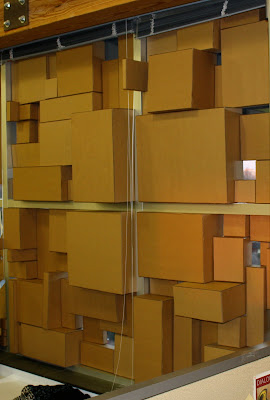






Artist: Katherine Tyrrell
Jardin des Palais Royal, France
http://www.urbansketchers.com/search/label/color%20pencils

Stephanie Schmitt

Artist: Matthew Cencich
Victoria Harbour
http://www.urbansketchers.com/search/label/Harbour
http://www.flickr.com/people/mn_images

Stephanie Schmitt

Artist: Greg Betza
Samarian Gorge, Crete
http://www.urbansketchers.com/search/label/crete
http:www.gregbetza.com/

Stephanie Schmitt

Artist: Pete Scully
Soho, New York City
http://www.urbansketchers.com/search/label/Soho
http://petescully.com/

Stephanie Schmitt

Artist: Barry Jackson
Trafalgar Square, London
http://www.urbansketchers.com/search/label/squares




In this assignment we were to record moments within our assigned building. The thumbnails should walk viewers through your space, aiding in their understanding of its design and layout.
I explored my space from a variety of vantage points as you can see above.
-----
Above my Mossman thumbnails you will find our "Divide and Conquer" assignment. Basically we were to choose 5 perspective images drawn in 5 different styles we admire, study how we could incorporate particular techniques to further enhance our thumbnail views.
-----
Within groups we further explored the Mossman building here on campus by diagraming. I was personally assigned to the "Landscape Diagram", trying to capture a footprint and the context neighboring the building like trees, sidewalks, streets etc. I learned a lot about control with this diagram. I found that less is more and instead of color the crap out of my diagram, it would be best to be subtle. If I could redo my diagram, I would most likely fade out the picture and use more neutral tones (however these were the colors my group decided on). Other then the fact that it looks like a 5 year old did it, I think it well expresses the surroundings of Mossman and if you were to suddonly step onto the grounds around the building you might just know where you are and what is around you.
-----
Finally, in our building groups we made presentation boards consisting of two large diagrams of our choice, 3 perspective drawings from each group member and one thumbnail from each person as well. We based our color scheme around the color palette we chose for our diagrams, red, yellow, orange and green. We always brainstormed ways to express the basic function of the Mossman building itself, to guide and lead college students in all their academic and financial needs. We related this to Minerva, one of UNCG's founding inspirations, the Roman goddess of wisdom and knowledge. Our composition layout of the board was intended to mimic the layout of Mossman, placing the diagrams as the cubes of the building which were largest and so on.























